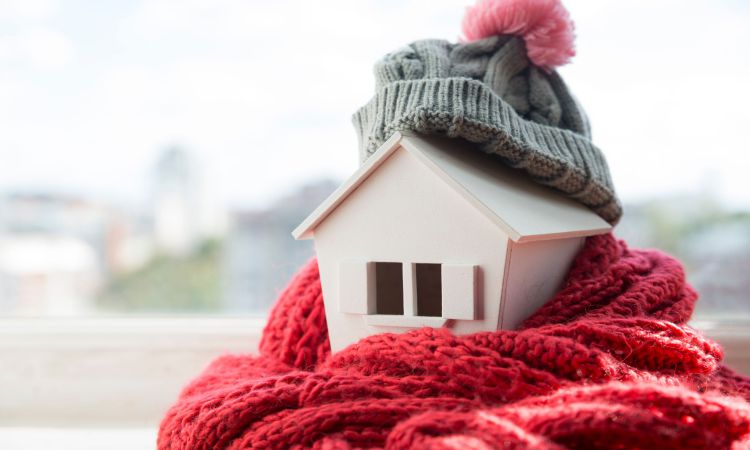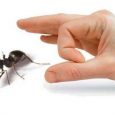 Winter is coming, and with it, a surge of heaters powering up to combat the extreme winter temperatures. It’s safe to say that cold weather is becoming the norm, with experts arguing that global warming will continue to wreak havoc throughout the U.S. this year and beyond.
Winter is coming, and with it, a surge of heaters powering up to combat the extreme winter temperatures. It’s safe to say that cold weather is becoming the norm, with experts arguing that global warming will continue to wreak havoc throughout the U.S. this year and beyond.
Given that none of us want to endure a chilly winter day longer than we need to, you may be getting ready to power your heater on for the first time this season. Not so fast!
Before you get back into the swing of heating your home for the winter, there are a few things you can do to winterize your system. Here’s what to know about how to maintain your HVAC in the cold.
1. Change Your Air Filter
You might have seen this essential HVAC maintenance tip coming, but it’s well worth a mention. Not only does your air filter help keep harmful dust and debris from clogging your indoor air, but it also helps your entire system run more smoothly. A clogged filter may mean that your HVAC system struggles to keep up with your heating needs right when you need it most.
Experts suggest that you change your air filter at least once every 30 to 90 days. However, you may need to do so sooner depending on your household makeup, especially if you have pets. The best filters for your furnace and central AC will have a high MERV rating.
2. Clean Your System
One of the easiest ways to winterize your HVAC unit is to do some seasonal cleaning. No matter what kind of system you have, dust and debris can keep it from being as efficient as it should be in the cold.
Start inside by cleaning your vents and registers, which tend to accumulate dust throughout the year. If you’ve moved any furniture to block these areas, make sure to move it now. You can also do a light dusting of your indoor AC and furnace units, as well as a quick visual inspection to check for leaks or damage.
Next, head outside to your exterior AC unit. Though these units are rated for outdoor weather and extreme temperatures, you may want to give yours a little extra attention. Clear away any dead leaves and debris that have built up during the fall, as this can reduce efficiency and even wreak havoc with your unit’s copper tubing. Cut back any plants that have grown too close to your unit, and do a light cleaning of the fins.
You may also want to choose an air conditioner cover to protect your system in the winter. Your best option here is one made from a breathable material like canvas, as plastic and vinyl can trap moisture and cause mold growth over time.
3. Add More Insulation
As stated above, most modern air conditioners are designed to withstand bad weather and cold temperatures. However, a little extra attention never hurts, especially when it comes to the risk of hard freezes.
If you haven’t done so already, consider adding some extra insulation around any exposed pipes of your HVAC unit. This can keep the essential fluids and wires within your system from freezing during a cold snap. It can also help prevent the loss of the heating you’re paying for!
4. Update Your Thermostat
It’s easy to forget your thermostat during routine AC system maintenance, but this device is what ensures that your unit keeps going strong all winter!
Check to make sure that the temperature reading on your thermostat matches the actual temperature inside your home. If it doesn’t, you may need to recalibrate the device, or you may need to reach out to a professional.
In addition, now is a good time to check your device’s programming. Make sure you’ve set it to heat your property during the times when you and your household are inside. Letting the air get cooler when everyone is away or asleep—even by ten degrees or so—can reduce your energy bills.
Last, consider upgrading your thermostat if it’s outdated, especially if you haven’t yet invested in a digital model. Modern thermostats can be a great help toward overall energy efficiency, and many can offset the cost of the upgrade over a short period of time.
5. Warm It Up
Just like any other machine, your HVAC system works best if you give it a chance to warm up before expecting it to run full-throttle. Even if you don’t feel like you’ve needed the extra heating power yet, make sure to start running your heating unit every now and then to prime it for regular use. This can also give you a chance to make sure everything is running as it should before you’re in desperate need of heat on a cold winter night!
6. Schedule a Check-Up
While there’s plenty you can do yourself to winterize your HVAC system, getting help from a professional can ensure that everything is ready to go when the cold weather comes. An expert technician from a local AC company can check for issues, verify the heating and cooling efficiency of your system, and even tackle minor repairs on the spot. Because they have a keen eye for what could go wrong, they might even keep a minor problem from snowballing into a major headache on a cold day!
Take the Time to Prep for Winter Temperatures
Even if the cold has snuck up on you, there’s plenty you can do to prepare for winter temperatures. From some seasonal cleaning to a professional inspection, all of the tips above can help ensure that your system is in top shape before you need it most. With a little time and effort, you’ll be able to keep your household warm and cozy all winter long!
Looking for more quick tips to make the most of your home, technology, and more? Be sure to take a look at our other guides for additional info.




